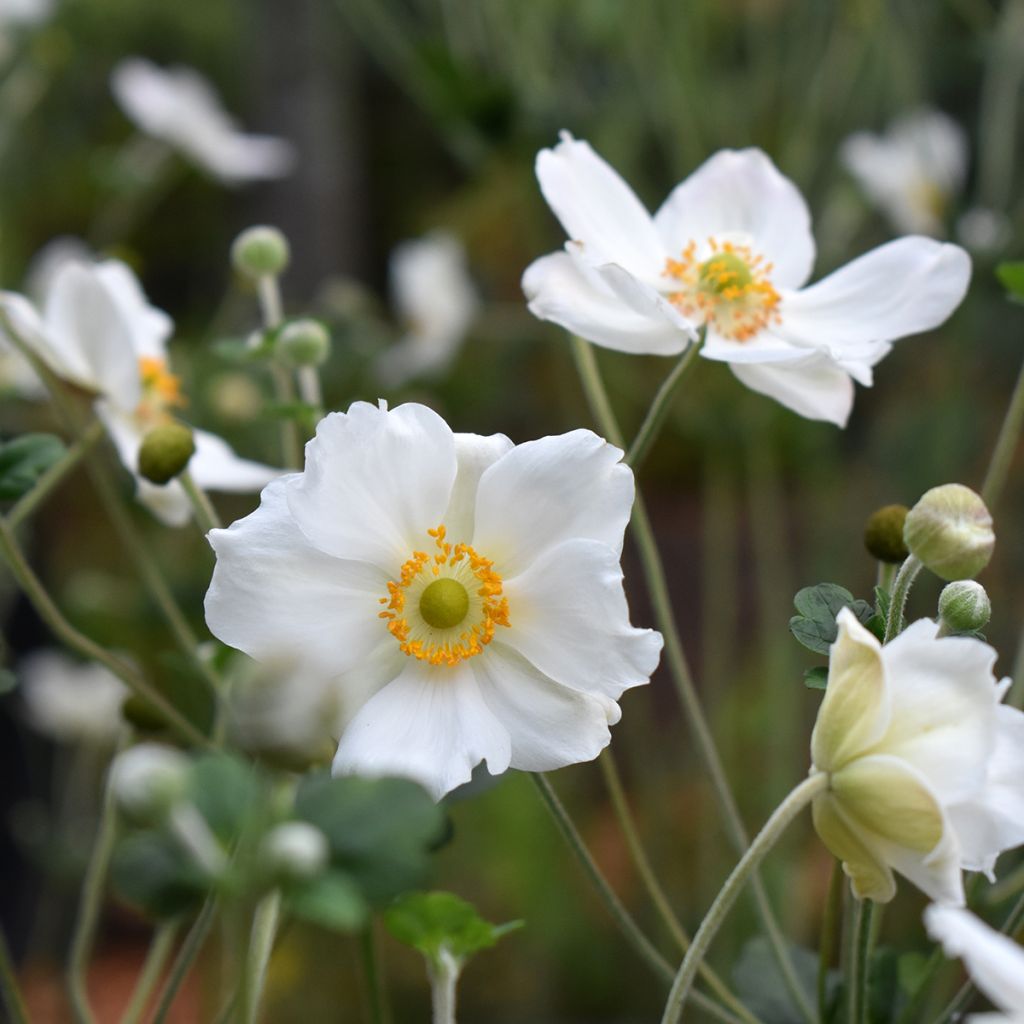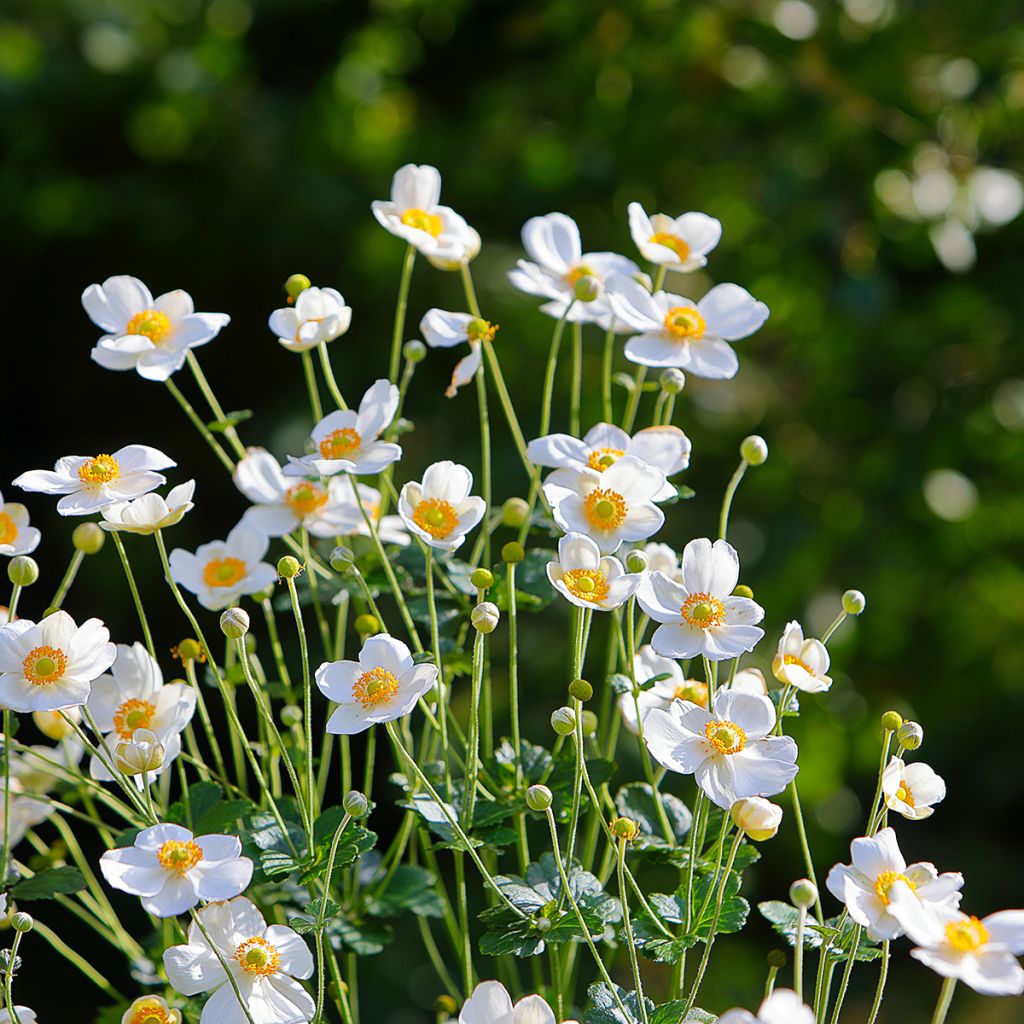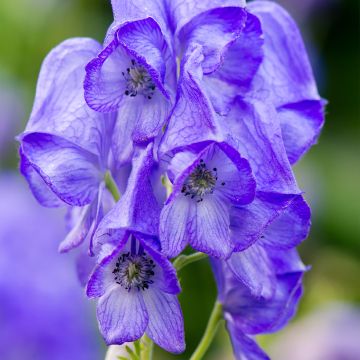

Anemone hybrida Honorine Jobert


Anemone hybrida Honorine Jobert


Anemone hybrida Honorine Jobert


Anemone hybrida Honorine Jobert


Anemone hybrida Honorine Jobert


Anemone hybrida Honorine Jobert


Anemone hybrida Honorine Jobert


Anemone hybrida Honorine Jobert
Anemone hybrida Honorine Jobert
Anemone x hybrida Honorine Jobert
Japanese Anemone, Windflower, Woolly anemone
Well packaged and protected, vigorous and healthy plants.
Marie Christine, 01/10/2025
Special offer!
Receive a €20 voucher for any order over €90 (excluding delivery costs, credit notes, and plastic-free options)!
1- Add your favorite plants to your cart.
2- Once you have reached €90, confirm your order (you can even choose the delivery date!).
3- As soon as your order is shipped, you will receive an email containing your voucher code, valid for 3 months (90 days).
Your voucher is unique and can only be used once, for any order with a minimum value of €20, excluding delivery costs.
Can be combined with other current offers, non-divisible and non-refundable.
Home or relay delivery (depending on size and destination)
Schedule delivery date,
and select date in basket
This plant carries a 12 months recovery warranty
More information
We guarantee the quality of our plants for a full growing cycle, and will replace at our expense any plant that fails to recover under normal climatic and planting conditions.

Would this plant suit my garden?
Set up your Plantfit profile →
Description
Anemone x hybrida 'Honorine Jobert' is a marvel. This old variety, discovered in a garden in Verdun by a certain Mr. Jobert between 1858 and 1860, is exceptionally vigorous and floriferous. Mr Jobert gave his daughter's name to this exuberant and candid anemone, which is large in size and produces very beautiful single flowers, in large, bright white cups with a crown of long yellow stamens. With perfect simplicity, the flowering emerges from a particularly prolific and sturdy plant. Its growth sometimes needs to be controlled.
The 'Honorine Jobert' Japanese anemone belongs to the Ranunculaceae family. It reaches a height of 1.2 to 1.8m (4 to 6ft), depending on the richness of the soil, with a diameter of 60cm (24in). Like other Japanese anemones, it is a perennial plant with fibrous "tubers" that form large, vigorous and rounded clumps, which can occupy a large surface area on the ground over time. The foliage is deciduous to semi-evergreen depending on the climate. It is deeply lobed, dark green, strongly veined on the underside, and more or less pubescent. It is very downy when it unfurls. The particularly abundant flowering takes place from August to October. The flowers are solitary, 7cm (3in) wide, and borne on strong, upright stems. They first appear as delightful oval and downy buds, then open into flared cups with 11 pure white petals, with a pink reverse. They surround a wide golden yellow heart, densely filled with stamens. Japanese anemones can live for about ten years in the same location.
The beautiful 'Honorine Jobert' deserves a place in every garden, from white gardens to herbaceous borders. Plant it in semi-shade and in soil that remains moist. This variety is one of our favourites, as you may have guessed. However, this plant does have a slight weakness: it does not tolerate the presence of limestone in soil. It adorns the garden or patio from the end of summer until the first frosts. When planted in the back of borders, it blends its elegant flowering with the grace of Aster cordifolius or Aster laevis, and the nostalgic charm of perennial chrysanthemums. The 'Honorine Jobert' variety is perfect in the background of flower beds, in front of a hedge of hydrangeas, for example. The lightness of its flowers goes well with shade-tolerant grasses, like Pennisetum alopecuroides. The finely cut foliage adds a beautiful dark green note to flower bouquets. Sometimes invasive if it is happy, it easily self-seeds. It is quite easy to limit its growth.
Report an error about the product description
Anemone hybrida Honorine Jobert in pictures




Flowering
Foliage
Plant habit
Botanical data
Anemone
x hybrida
Honorine Jobert
Ranunculaceae
Japanese Anemone, Windflower, Woolly anemone
Cultivar or hybrid
Other Japanese Anemones
View all →Planting and care
Japanese anemones thrive in gentle sunlight or partial shade, in moist, loose, humus-rich soil with minimal limestone content. They slowly spread with the help of their underground rootstocks. Plant them outdoors in spring or autumn, spacing them 30cm (12in) apart. Plant in moist to wet, well-drained soil. Choose a location sheltered from strong winds that could flatten the clumps. Once the young plants are established, they should not be disturbed. The flowering becomes more abundant as the years go by. In late autumn, cut the flower stalks back to ground level. Every 2 or 3 years, apply well-rotted compost to their base to enrich the soil, as they are quite demanding.
Planting period
Intended location
Care
-
, onOrder confirmed
Reply from on Promesse de fleurs
Similar products
Haven't found what you were looking for?
Hardiness is the lowest winter temperature a plant can endure without suffering serious damage or even dying. However, hardiness is affected by location (a sheltered area, such as a patio), protection (winter cover) and soil type (hardiness is improved by well-drained soil).

Photo Sharing Terms & Conditions
In order to encourage gardeners to interact and share their experiences, Promesse de fleurs offers various media enabling content to be uploaded onto its Site - in particular via the ‘Photo sharing’ module.
The User agrees to refrain from:
- Posting any content that is illegal, prejudicial, insulting, racist, inciteful to hatred, revisionist, contrary to public decency, that infringes on privacy or on the privacy rights of third parties, in particular the publicity rights of persons and goods, intellectual property rights, or the right to privacy.
- Submitting content on behalf of a third party;
- Impersonate the identity of a third party and/or publish any personal information about a third party;
In general, the User undertakes to refrain from any unethical behaviour.
All Content (in particular text, comments, files, images, photos, videos, creative works, etc.), which may be subject to property or intellectual property rights, image or other private rights, shall remain the property of the User, subject to the limited rights granted by the terms of the licence granted by Promesse de fleurs as stated below. Users are at liberty to publish or not to publish such Content on the Site, notably via the ‘Photo Sharing’ facility, and accept that this Content shall be made public and freely accessible, notably on the Internet.
Users further acknowledge, undertake to have ,and guarantee that they hold all necessary rights and permissions to publish such material on the Site, in particular with regard to the legislation in force pertaining to any privacy, property, intellectual property, image, or contractual rights, or rights of any other nature. By publishing such Content on the Site, Users acknowledge accepting full liability as publishers of the Content within the meaning of the law, and grant Promesse de fleurs, free of charge, an inclusive, worldwide licence for the said Content for the entire duration of its publication, including all reproduction, representation, up/downloading, displaying, performing, transmission, and storage rights.
Users also grant permission for their name to be linked to the Content and accept that this link may not always be made available.
By engaging in posting material, Users consent to their Content becoming automatically accessible on the Internet, in particular on other sites and/or blogs and/or web pages of the Promesse de fleurs site, including in particular social pages and the Promesse de fleurs catalogue.
Users may secure the removal of entrusted content free of charge by issuing a simple request via our contact form.
The flowering period indicated on our website applies to countries and regions located in USDA zone 8 (France, the United Kingdom, Ireland, the Netherlands, etc.)
It will vary according to where you live:
- In zones 9 to 10 (Italy, Spain, Greece, etc.), flowering will occur about 2 to 4 weeks earlier.
- In zones 6 to 7 (Germany, Poland, Slovenia, and lower mountainous regions), flowering will be delayed by 2 to 3 weeks.
- In zone 5 (Central Europe, Scandinavia), blooming will be delayed by 3 to 5 weeks.
In temperate climates, pruning of spring-flowering shrubs (forsythia, spireas, etc.) should be done just after flowering.
Pruning of summer-flowering shrubs (Indian Lilac, Perovskia, etc.) can be done in winter or spring.
In cold regions as well as with frost-sensitive plants, avoid pruning too early when severe frosts may still occur.
The planting period indicated on our website applies to countries and regions located in USDA zone 8 (France, United Kingdom, Ireland, Netherlands).
It will vary according to where you live:
- In Mediterranean zones (Marseille, Madrid, Milan, etc.), autumn and winter are the best planting periods.
- In continental zones (Strasbourg, Munich, Vienna, etc.), delay planting by 2 to 3 weeks in spring and bring it forward by 2 to 4 weeks in autumn.
- In mountainous regions (the Alps, Pyrenees, Carpathians, etc.), it is best to plant in late spring (May-June) or late summer (August-September).
The harvesting period indicated on our website applies to countries and regions in USDA zone 8 (France, England, Ireland, the Netherlands).
In colder areas (Scandinavia, Poland, Austria...) fruit and vegetable harvests are likely to be delayed by 3-4 weeks.
In warmer areas (Italy, Spain, Greece, etc.), harvesting will probably take place earlier, depending on weather conditions.
The sowing periods indicated on our website apply to countries and regions within USDA Zone 8 (France, UK, Ireland, Netherlands).
In colder areas (Scandinavia, Poland, Austria...), delay any outdoor sowing by 3-4 weeks, or sow under glass.
In warmer climes (Italy, Spain, Greece, etc.), bring outdoor sowing forward by a few weeks.



















































